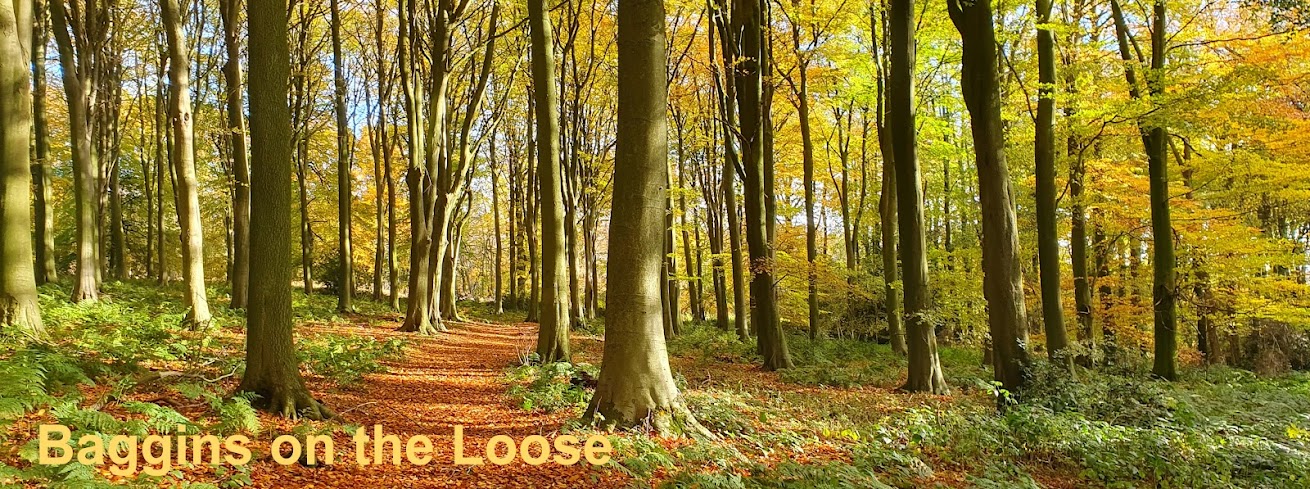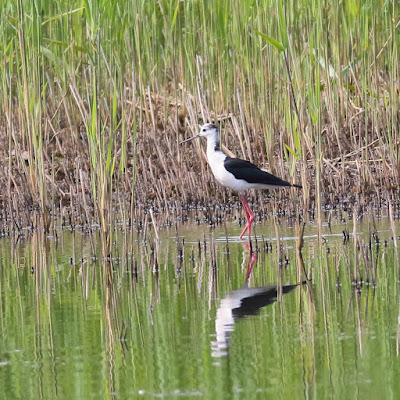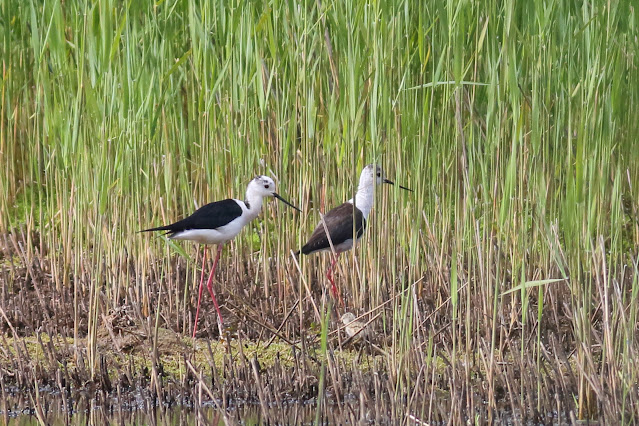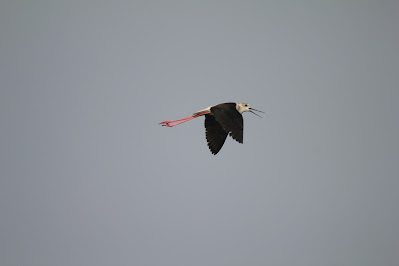 |
| Ribblehead Viaduct, 28/06/2022 |
I dug the tent out last week of June and took myself off to Wensleydale in the
Yorkshire Dales, ostensibly to visit a YWT reserve that has been on my 'to visit' list for some time -
Ashes Pasture. Orchid central by all accounts and one of the few places in Yorkshire to spot some of the scarcer species such as
Greater Butterfly &
Frog Orchid. More in hope than expectation and despite much searching I wasn't too disappointed to see neither, it was just good to spend 3 days exploring some of the wilder, more rugged areas of Wensleydale and I packed in about as much as I could in between the rain showers.
Day 1
 |
| Common Spotted Orchid, Ashes Pature, 28/06/2022 |
Arrived at my campsite,
Philpin Farm, mid afternoon, pitched the tent and headed straight off to
Ashes Patsture. The weather was awful - blustery wind and frequent rain showers, but I made the best I could of it. Searched high and low for scarce orchids but all I saw were masses of
Common Spotted. most of which were of the pure white
variety and the odd
Marsh Orchid.
Plenty of other wild flowers in the lush hay meadows there including Yellow Rattle, Clover, lots of Hawkweed species which I always struggle with but thought were probably Smooth Hawkbit and some impressive stands of Brook Thistle.
 |
| Brook Thistle, Ashes Pasture, 28/06/2022 |
 |
| Smooth Hawkbit, Ashes Pasture, 28/06/2022 |
 |
Common Spotted Orchid, Ashes Pasture, 28/06/2022
|
 |
| Curlew, Ashes Pasture, 28/06/2022 |
Birdwise, very quiet - a few
Linnets, Goldfinches and
Meadow Pipits in the meadows braving the inclement weather, and reassuring to still see
Curlews and
Oystercatchers, traditional Dales breeders, calling and flying overhead.
Later in the day I drove up to Semer Water but although the weather was ok when I set off increasingly cloudy skies and then driving rain cut short any meaningful exploration of the place. Amazingly I had a female Redstart at the car park, best bird of the day!
 |
| Semer Water, 28/06/2022 |
Day 2
The only way to properly access the twin Woodland Trust sites of Thornton and Twistleton Glen is to pay up and do the Ingleton Waterfalls Trail. It's well worth the £8.00 admission fee but be aware if you have dodgy knees the warnings about it being a strenuous walk are totally accurate! 4.5 miles with some challenging up and down paths the trail takes in several waterfalls including breath-taking Thornton Force and Pecca Falls, and plenty of picturesque gorge scenery from start to finish.
 |
| Ingleton Waterfalls Trail, 29/06/2022 |
 |
| Pecca Falls, Ingleton Waterfalls Trail, 29/06/2022 |
 |
| Thornton Force, Ingleton Waterfalls Trail, 29/06/2022 |
At the Northern end the trail opens out crossing over the River Twiss, Kingsdale and Twistleton Scars before returning down through Twistleton Glen. A small colony of Sand Martins feeding over the river and a couple of Grey Wagtails were a welcome addition to a rather poor bird species tally, although I did have a single Dipper flying upstream on the way up.
 |
River Twiss, Ingleton Waterfalls Trail, 29/06/2022
|
A bit further on, still on the open ground at the top of the trail I had a family party of
Wheatears, a couple of
Stonechats and a pair of
Peregrine Falcons that were probably nesting in the nearby quarry workings. Some fine views of
Ingleborough from up here too, looking brooding and not a little menacing against darkening skies.
 |
| Ingleborough, 29/06/2022 |
 |
| Stonechat, Ingleton Waterfalls Trail, 29/06/2022 |
 |
| Peregrine, Ingleton Waterfalls Trail, 29/06/2022 |
The route back down was less dramatic, I took an alternative path somehow bypassing Beezley Falls and could only glimpse Snow Falls through the trees, before descending back down the Baxenghyll Gorge alongside the River Doe and finally exiting the trail on the northern edge of Ingleton village.
 |
| River Doe, Ingleton Waterfalls Trail, 29/06/2022 |
I was pretty tired afterwards but feeling revived after a late lunch I decided to head to the
Snaizeholme Red Squirrel Trail at Widdale, just outside Hawes. Just about the only place to see Red Squirrels in Yorkshire I did a post all about the history of their discovery here 40 years ago -
see the post here, so I'll not repeat myself, but having written about it I was naturally keen to visit.
The omens didn't look good after spending a full hour at the first viewing area. Plenty of woodland birds about - Willow Warbler, Blackcap, Long Tailed Tits, Great Tits and a nicely perched Spotted Flycatcher in the rain but sadly not a sniff of the sought after 'nutkins'.
 |
| Red Squirrel viewing area, Snaizeholme, 29/06/2022 |
 |
| Spotted Flycatcher, Snaizeholme, 29/06/2022 |
 |
Red Squirrel, Snaizeholme, 29/06/2022
|
Almost at the end of the trail, with rain showers threatening to put a complete dampener on proceedings, I stopped in a clearing for a break at what turned out to be another viewing area (but not signed as such) and who should come trotting along a horizontal felled tree trunk not 10 yards from where I was sitting? Could hardly believe my luck!
 |
| Red Squirrel, Snaizeholme, 29/06/2022 |
 |
| Red Squirrel, Snaizeholme, 29/06/2022 |
I've seen them in parks in mainland Europe and a few fleeting glimpses in Northumberland and Scotland but this was my first Yorkshire experience and I'd forgotten just how tame they are. This one was almost at my feet! I tried to get some video footage on my phone but in my excitement I must have pressed the wring buttons and nothing came out - shame, but this little fellah will live long in the memory!
All the bad weather cleared away late afternoon to leave a beautiful sunny evening so I took a short drive from the camp site to Twistleton Pastures and had a wander around. Curlews and Oystercatchers in the air, a single Whinchat and loads of Wheatears, nearly all of which were juveniles - a bird that's obviously done well up here I had at least 25, maybe more.
 |
| Northern Wheatear (juv), Twistleton Pastures, 29/06/2022 |
 |
| Northern Wheatear (juv), Twistleton Pastures, 29/06/2022 |
 |
| River Doe, Twistelton Patures, 29/06/2022 |
Day 3
 |
| The lake, Ingleborough Nature Trail, 30/06/2022 |
Last day and nothing too strenuous after yesterday. I did the
Ingleborough Estate Nature Trail at Clapham in the morning. Largely man made by the Victorian philanthropist Reginal Farrer and still owned by the Farrer family (
history here if you're interested), it's one of the few areas of decent woodland in this part of the Dales and also the site of popular tourist attractions
Ingleborough Cave and
Gaping Gill. It was pleasant enough, a gentle ascent through the heavily wooded valley of Clapham Beck up to the cave and back down
Thwaite Scars to the village. A couple more
Spotted Flycatchers, Blackcap, Willow Warbler and several more
Wheatears on the scars. I didn't do the cave, not my thing, besides I had to get back to the campsite to pack up.
 |
| The entrance to Ingleborough Cave, nr Clapham, 30/06/2022 |
Malham Tarn was my intended destination on the way back home but on the way I passed
Brae Pasture, another YWT reserve I hadn't visited before so it seemed rude not to pop in! Lying in the shadow of
Ingleborough its a gently sloping, small reserve but packs a lot into its 8 Hectares with hay meadows, limestone pavement and a small wooded gill. There was a
Curlew frantically calling the whole time I was there that no doubt had young chicks somewhere nearby so I didn't dwell, but stayed long enough to see
Dark Green Fritillary &
Common Blue butterflies in the meadows that were jam packed with wild flowers.
 |
| Dark Green Fritillary, Brae Pature, 30/06/2022 |
 |
| Common Blue, Brae Pasture, 30/06/2022 |
 |
| Yellow Rattle, Brae Pasture, 30/06/2022 |
 |
| Curlew, Brae Pasture, 30/06/2022 |
 |
| Ingleborough from Brae Pasture, 30/06/2022 |
And so onto Malham Tarn, one of only 8 alkaline lakes in Europe and at an altitude of 377 metres the highest in the UK.
 |
| Malaham Tarn, 30/06/2022 |
 |
| Malham Moss, 30/06/2022 |
I didn't have the time to walk all the way around but having sat in the bird hide for 30 minutes seeing nowt but
Canada Geese and some distant
Sand Martins, I concentrated my efforts on
Tarn Moss near the field centre, a fabulous raised bog and willow carr habitat on the western edge of the tarn. A great boardwalk, lovely late afternoon sunshine and brimming with wildlife, especially plant species - a very pleasant couple of hours to round off my break in the Dales.
The first thing I noticed were lots of these little fellahs, Common Lizards. Tricky to photograph as they skittered away on approach but great to see so many and this one stayed still just about long enough for a quick snap.
 |
| Common Lizard, Malham Moss, 30/06/2022 |
Most interesting in amongst the many flowers on show were these beautiful
Marsh Cinquefoils. They're supposed to be at
Askham Bog in York but I've never seen them there or anywhere else for that matter but at least I know what to look for now.
 |
| Marsh Cinquefoil, Malham Moss, 30/06/2022 |
This was another one new to me at lets be honest not the most attractive, Marsh Lousewort or 'Red Rattle'
 |
| Marsh Lousewort, Malham Moss, 30/06/2022 |
A few more to finish from this most wonderful of places plus a few more miscellaneous pics from my short trip to Wensleydale.
 |
Northern Marsh Orchid, Malham Moss, 30/06/2022
|
 |
Eyebright, Malham Moss, 30/06/2022
|
 |
Marsh Valerian, Malham Moss, 30/06/2022
|
 |
Wood Cranesbill, Malham Moss, 30/06/2022
|
 |
Malham Moss, 30/06/2022
|
 |
| Typical dales scenery, looking West from Twistleton Scar End, 29/06/2022 |
 |
| Looking back down the Ingleton Waterfalls Trail, 29/06/2022 |
 |
| Hay Barn, Ashes Pasture, 28/06/2022 |
 |
Heath Bedstraw, Ingleton Waterfalls Trail, 29/06/2022
|
 |
| Foxgloves, Widdale, 29/06/2022 |
 |
| Wild Thyme, Brae Pasture, 30/06/2022 |

























































